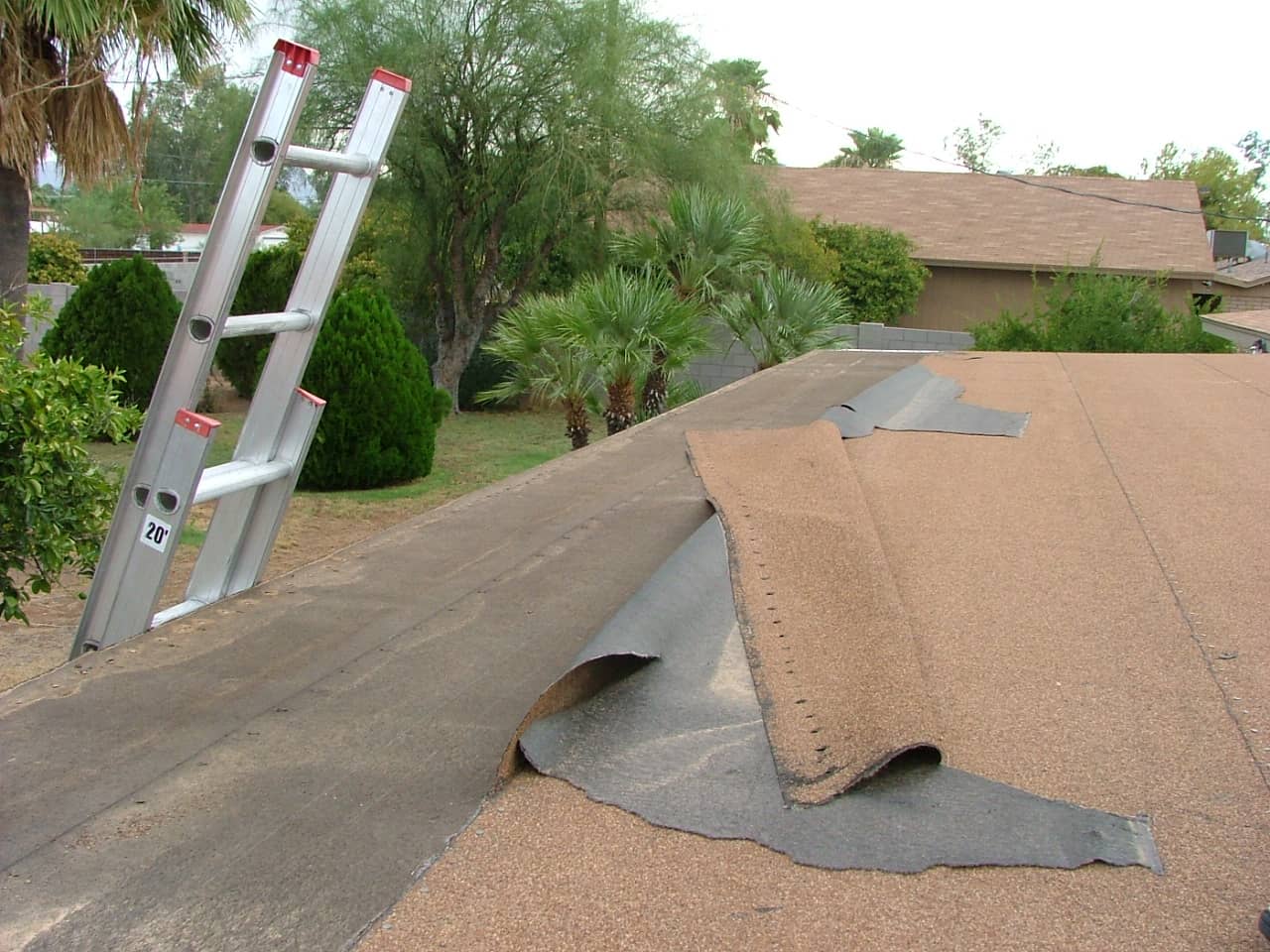The best way to prevent a leak is to know if your roof has a problem before the wind and rain begin. Don’t wait for water marks to appear on your ceiling before inspecting your roof to see if it can hold up during a storm.

Climb up onto your roof (or ask a roofer to do it) and do a visual inspection of your roof a couple of times each year and after every big storm. If you don’t feel safe on the roof, there’s no shame in hiring a professional, who will know how to navigate the dew and frost that can collect up there on cold Arizona mornings and any moisture that can make a roof slippery.
Here is what to look for during an inspection of a foam roof or a built-up/asphalt roof, which are the two most common types of flat roofs in Arizona.
- Check around every roof penetration. Look around the chimney, vents, skylights, walls, flashing, air conditioning elbows and stands, antennas and support wires, and satellite dishes.
- Remove any build-up of dirt, leaves or pine needles around drains, scuppers or crickets that would cause pooling and keep water from draining off the roof.
- Trim tree branches away from your roof.
- Check for damage or holes in the areas where your flat roof joins a tiled or shingled roof.
- Inspect the outside edges of the roof for loose roofing material or drip edge flashing.
- Look for cracks along the seams of rolled roofing.
- Search for holes pecked by birds in foam roofing.
- On a territorial-style home with stucco parapets, judge how well the stucco on the top and backside of all the parapets is holding up. Cracked stucco or a poor flashing job between stucco and roof material are common problems that can lead to leaks.
Once you discover your roof’s weak spots, patch them. You can do this with some common tools and supplies. Rosie recommends:
- Henry 208 Wet or Dry Patch Roof Cement in a tube (use in caulking gun) (Do not use on foam roof)
- Henry 204 Plastic Roofing Cement (1 gallon or 5 gallon sizes) (Do not use on foam roof)
- Henry 183 Reinforcing Fabric (used in 3 coursing repairs, for large cracks) (Do not use on foam roof)
- VIP caulk
- caulking gun
- broom or brush
- air compressor (if available, to blow out the area before repairing)
- putty knife
- work gloves
- old clothes
- Goop hand cleaner (or other strong cleaner)
- rags
- spray paint (optional, to paint over your repairs on vent stacks)
Make sure the area you are repairing is clean and dry before you apply any of these products. Performing regular preventive maintenance with the correct will extend the life of your roof.
A tip: If your roof is relatively new, check with your roofer before doing any repairs yourself. Unauthorized repairs could void your warranty.
###















